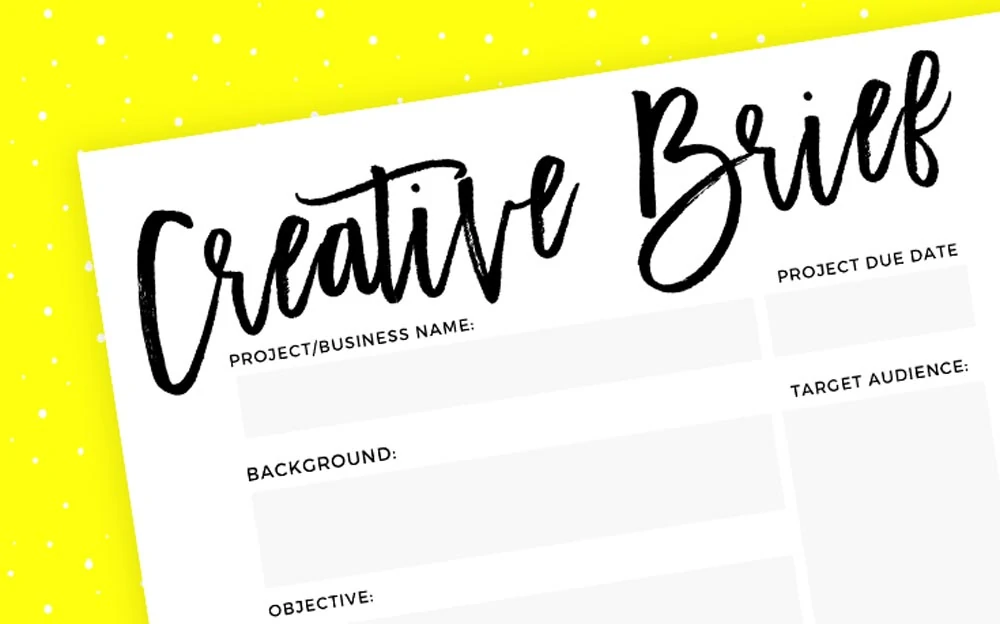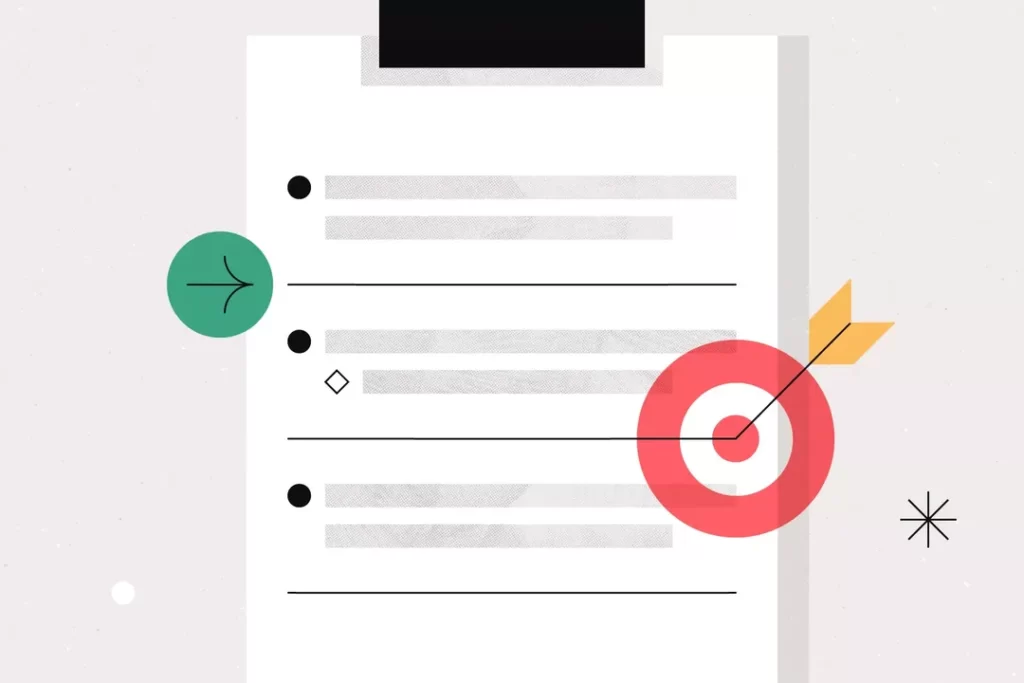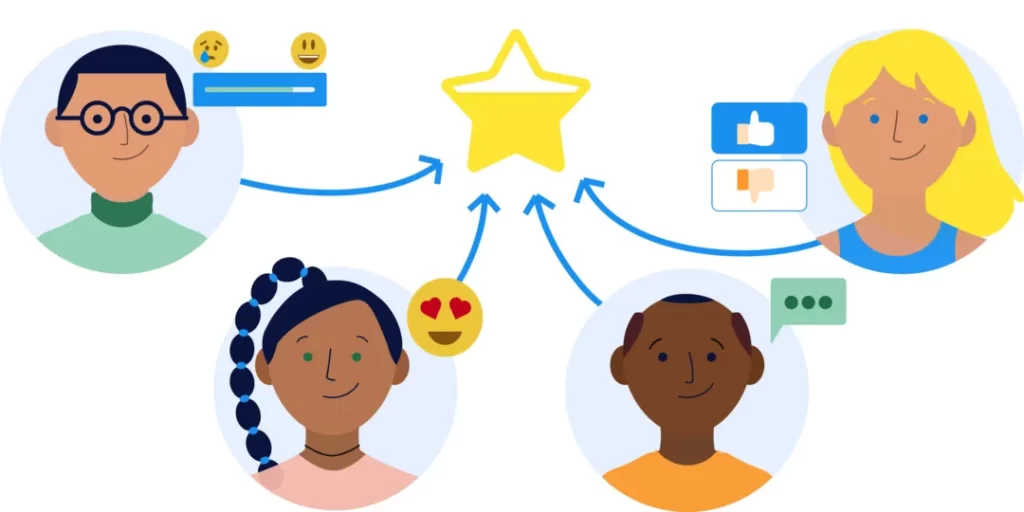How to Write a Creative Design Brief in 10 Steps
Coming up with a creative design brief may seem intimidating at first. But, having a solid brief is crucial for guiding your team to develop a design that truly resonates with your target audience. The brief is the north star that aligns the client, creative team, and end users around a shared vision.
Writing a brief doesn't have to be painful, however! By following some key steps in the process, you'll end up with a compelling brief communicating what you're looking for. This allows your creative team to effectively apply their skills so you get back work that excites and delights.
Table of Contents
Understanding the Purpose
Before writing anything down, be clear on what you want the creative work to achieve.
- Is the goal to increase brand awareness?
- Drive conversions on a landing page?
- Promote a new product line?
Define the business objectives and intended response from the audience so the creative team has proper context.
77% of marketers say connecting creative work to business goals is the most challenging part of the branding process. Having clear goals upfront alleviates this pain point.
Researching Your Audience
Now that you know the purpose behind the creative design get to know who it's meant for. Develop audience proto-personas that outline:
- Demographics: Age, gender, location, income level, education level, occupation, etc.
- Values and interests: What matters most to them? What do they care about and get excited by?
- Pain points: What frustrations and problems do they experience?
- Behavior patterns: Where and how do they consume information? What sites and apps do they use?
Understanding the audience at such a detailed level may reveal insights that can inform the visual style, tone, or medium to use for the creative.
Crafting an Impactful Creative Design Brief

You've set the project up for success by defining goals and getting to know the audience. Now it's time to put together the brief! Follow these steps when writing yours:
Succinctly State the Objective
Start the brief with a clearly defined objective. This distils the purpose of the project into a single statement.
For example:
- “Increase brand awareness among 20-30-year-old professionals in the fintech space.”
- “Drive 100,000 visits per month to our recruitment landing page.”
Keeping it tight and specific immediately aligns all stakeholders and focuses creative efforts.
Describe the Target Audience
Next, provide a snapshot of your audience based on earlier research.
Outline Success Metrics
After stating the goals and audience, define success by including quantifiable KPIs and metrics.
This gives the creative team a goalpost to work towards. For example, if the objective is to increase conversions, the brief may state:
“Success metrics:
- 15% conversion rate on the landing page
- 75% increase in account registrations.”
Share Background on Brand Story and Style Guide
Give context around your company and existing brand assets so the creative team can envision the visual language. Share:
- Your brand story, mission, values
- Product/service offerings
- Brand style guide and guidelines
- The tone of voice standards
- Any ingress creative work
Providing these reference points creates alignment while still allowing the team to innovate.
36% of agencies say that lack of brand style guidelines is one of their most significant challenges. Equip them upfront so they can hit the ground running.
Choose the Creative Types and Mediums

Now that you've provided helpful context, make the brief more tangible by outlining precisely what creative materials you need to produce.
Pick Relevant Creative Marketing Types
Common options include:
Digital
- Display ads
- Social posts
- Landing pages
- Email campaigns
- Interactive content
Consider which formats will most effectively convey messages to your audience and drive the defined actions when deciding.
Specify Creative Medium Details
Then, provide additional specifications for the formats chosen.
For example:
- Ad unit sizes
- Run-times for video content
- Print dimensions
- Any interactive elements
Offering these supportive details removes the guesswork on expected deliverables for the team.
Set Clear Priorities
There may be several components you want created. Provide a prioritised list indicating the most critical items rather than just leaving it open-ended.
Set Your Team Up for Success

You're almost done with your brief! Wrap it up by sharing helpful information to expedite project execution.
Budget and Timelines
Be transparent about the budget range and expected timelines so no one is caught off guard later.
Budget Transparency Fosters Better Work
Of agencies who operate with an unknown budget at the beginning of a project:
- 23% deliver low-quality work
- 36% suggestive upselling
Sharing any budget caps also prevents wasting effort pitching ideas not in the ballpark.
As for timelines, pad in the buffer for best-case and worst-case scenarios from your experience working with creative teams; under-promise and over-deliver are best here.
Project Owner Contact
Include a designated point of contact from your company who will be available to provide feedback and approvals throughout the process. Make sure to share their:
- Name
- Phone number
Legal or Compliance Guidelines
Lastly, provide any disclaimers, compliance rules, or regulatory information defining what creative elements can and cannot be produced.
For example, certain types of content may not be permissible in regulated industries like finance and healthcare.
Flagging this information early allows for a smooth review process without any surprises.
Following Up with Your Creative Team
You've put together what's shaping up to be an excellent design brief:
- The intended goal is clear and critical.
- Key details around audience needs are shared.
- Success metrics and priorities are defined.
- Helpful context on brand history and preferences is provided.
To kick the engagement off on a collaborative note, set up a quick call with the creative team at the start to:
- Provide space for the team to ask clarifying questions
- Discuss ideas or early concepts
- Confirm understanding around timelines, budgets, team contacts
Building in this touchpoint early on gets everyone aligned and off to an agile start. Leave the door open for any other needs during the execution process.
Reviewing and Providing Effective Feedback

As initial concepts start rolling in from the creative team, avoid reacting too quickly. Instead, let the ideas sink in over a few days before providing feedback.
Constructive feedback is essential for designers to refine and sharpen their work. But how you deliver it makes all the difference. Here's how to shape your critiques so they're helpful vs. harmful:
Do
- Share three positives for every one critique
- Explain what precisely does and doesn't resonate
- Suggest new directions to explore
- Reference any examples that embody what you're envisioning
Don't
- Use overly harsh language (“I hate this”)
- Dictate exact changes to execute
- Provide feedback without context
- Contradict earlier guidance
Following these principles makes receiving criticism less abrasive for creative teams. Framing it as a helpful steer rather than a harsh critique unblocks progress.
And if there are any pieces still missing or gaps the initial concepts didn't address, politely highlight those points. Just avoid language blaming the team for not including them already.
When to Compromise vs. Push Harder
What happens if the final creative concepts still need to match your original vision?
This isn't uncommon – the result won't always align perfectly with the brief. Reflect deeply on the most critical elements before deciding the next steps. Ask yourself:
- Does this still achieve the intended outcome in an impactful way?
- Are the differences minor or more significant departures?
- What resonates about what they came back with?
Suppose the concepts hit on the essence of what you were after; even if certain aesthetic elements took a different form, consider compromising. Place the objectives and audience resonance ahead of your stylistic preferences.
But for any significant inconsistencies severely limiting potential impact, push for the team to go broader and bolder with their ideas. Offer to facilitate new research or provide additional references to inspire fresh thinking. Just maintain a constructive tone focused on unleashing creativity vs. shutting concepts down.
With the right balance of flexibility and conviction, the result can still exceed expectations, even if it doesn't match your original vision. Celebrate the wins while still aiming for an ambitious impact.
Executing Your Creative Vision
The hard work has paid off – after revisions and refinement, you finally landed on design concepts that were checked and approved! The creative juice is flowing, everything aligns on strategy, and now it's gone time.
Carefully managing this last mile to bring your ideas fully to life protects both the integrity of the work and your investment of time, money, and brand reputation. Follow these best practices when kicking off full-scale production and distribution.
Secure Approvals from All Stakeholders
Before moving ideas from a theoretical concept phase into tangible deliverables, formally sign off with all impacted teams. This may include:
- Leadership/executives
- Compliance
- Legal
- Finance
- Sales
Creating an official gate for approvals prevents any last-minute surprises or shifts, which can be damaging. The time for open debate has passed by this point.
Define and Track Quantifiable Success Metrics Upfront
While creativity often thrives best with some ambiguity and openness, measurement benefits from specificity and structure.
Take the KPIs and metrics outlined early and break them down into precise targets to monitor once execution begins. Track performance daily or weekly against these benchmarks to ensure your campaign gains the desired traction.
If certain elements fall short, you can swiftly optimise based on accurate data vs. hunches. Maintaining this discipline provides fuel to justify ongoing investment into your creative vision.
Conduct Quality Assurance Testing

Creativity and compliance can coexist through rigorous QA testing! Put your designs through their paces by:
Functionality reviews across all:
- Browser types
- Devices
- Screen sizes
Accessibility assessments evaluating:
- Colour contrast
- Alt text
- Readability
Fact and legal validation of all claims and messaging
Building in these assurances reduces the risk of issues down the line, which may diminish consumer trust or your legal footing.
Create Roll Out and Monitoring Plans
The second your creative work starts reaching its real-world audience, valuable data pours in. Be proactive by designing launch plans specifying how you will:
- Release your campaign in stages across regions, segments, or channels
- Monitor performance based on data sources like web analytics, sentiment analysis, surveys, etc.
- Optimise creative variants based on response.
This closes the loop between insights, creation and execution by allowing you to refine your approach in real-time. Instead of leaving it up to chance, actively listen and steer into what resonates.
Conclusion
Bringing a creative vision to life takes courage, vision and no shortage of hard work. But by laying the proper foundation upfront in your brief, aligning closely with your creative partners, and actively monitoring performance, your ideas can thrive and make the impact imagined at the start.
Trust in the creative process while pursuing ambitious outcomes. And feel free to make changes when the data demands it – sometimes, the boldest ideas need a few rounds of polish before reaching their full potential. With an agile mindset and laser focus on your audience, your next creative project can be your greatest.
Frequently Asked Questions
What are some key sections to include in a creative design brief?
Some key sections are background/objectives, target audience overview, success metrics, creative formats and mediums needed, priorities, budget, timelines, central point of contact, and compliance guidelines.
How long should a creative design brief be?
An effective creative brief should be 1-2 pages at maximum. Anything longer risks becoming confusing or diluting the most vital details. Focus on only the most critical info.
When should I provide the creative brief to agencies or freelancers?
Provide the creative brief at the very start of your engagement with a creative partner so they can factor the goals, audience needs, and specifications into their proposals and initial concepts.
What if I don't have clear ideas before briefing a creative team?
Don't worry if you don't have a defined creative direction yet – providing info on your objectives, audience, brand style, etc., gives the innovative team guardrails to ideate within while allowing them the flexibility to get inventive. Focus on the outcomes rather than prescribe specific creative upfront.
How can I give effective feedback without discouraging creative partners?
When giving feedback, share three positive comments which resonate with everyone's critique to maintain morale. Explain precisely what works or doesn't rather than making blanket statements. And suggest new directions to explore vs. demanding changes. This constructive approach lifts creative partners.
